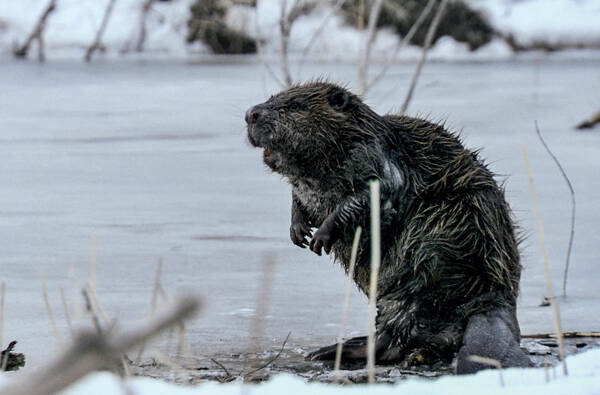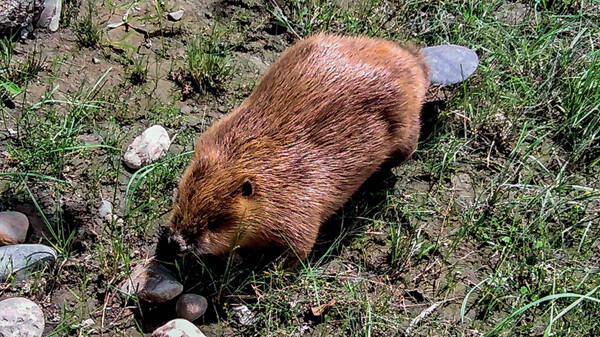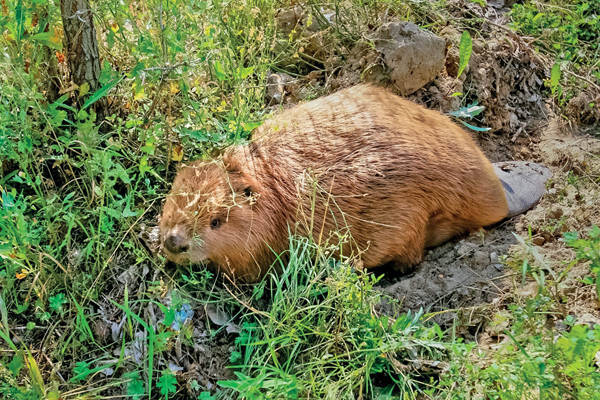Castor
IUCN
LCBasic Information
Feature
The body is obese, with no obvious difference between males and females. The head is short and blunt, the eyes are small, the neck is short, the limbs are short and wide, the forelimbs are short, and the tail is large and flat.
Distribution and Habitat
In China, it is distributed marginally in Xinjiang. Abroad, it is distributed in Europe and northern Asia.
Beavers are found in cold temperate and subarctic forest rivers, live on the shore, and choose broad-leaved dense forests, shrub forests, and riverside valleys with slow and deep water flow as their habitats.
Appearance
The body is very large. The tail is about 250mm long, large and flat, oval, hairless, and covered with large scales. The hind feet are webbed, and the four toes have double nails; the front feet are small and have strong claws. The ears are valve-shaped and can be closed when diving. The back of the body is chestnut or brown with long guard hairs.
Details
There are only two species of beavers in the world. The other is the American beaver, which is distributed in Canada and Alaska, USA. Beavers are highly adapted to aquatic life and can move underwater for a long time. They have the habit of building dams with branches and trunks and nesting next to the dams. Their fur is precious, their scent glands are well developed, and the beaver scent they secrete is a precious spice. In my country, beavers are endangered, and there are only about 500 of them in the Burgen River Nature Reserve in Xinjiang.

Beavers are active at night and rarely leave their holes during the day. They are good at swimming and diving and do not hibernate. Beavers have a unique ability to build dams. Wherever beavers live or have lived, there is a pond, lake or swamp. Beavers always work tirelessly to build dams with branches, stones and soft mud to block the way of streams. Small dams can merge into ponds, and large dams can become lakes with an area of several hectares. Beavers have the ability to transform their own habitats. When entering a new habitat or when the water level in the habitat drops, beavers will build dams with branches, mud, etc. to store water to protect the cave entrance underwater and prevent natural enemies from invading. In order to transport the building materials for damming on the shore to the interception dam, beavers sometimes dig a canal as long as 100 meters. Beavers move slowly and clumsily on land and do not move far from the water. They have weak self-defense capabilities, are timid, and like quiet environments. When they are frightened or in danger, they jump into the water and slap the water surface with their tails to warn their peers.

Beavers usually build nests near water. The nest chambers are made of branches and soil, 0.8-1.9m above the ground. There are three types of beaver habitats: cave dwelling, nest dwelling, and cave-nest dwelling combination. Cave dwellings are permanent and temporary. During the spring flood season every year, due to the melting of ice and snow, the river floods, and some beaver caves are flooded, forcing these beavers to migrate short distances and build simple caves on branch canals or islands for temporary or refuge use. Permanent caves are the places where beavers overwinter and reproduce, and their structures are relatively complex. Cave systems are generally distributed in areas with high river banks (more than 1.5m above the ice surface); cave-nest combinations (i.e., cave systems underground and a nest with a civil structure added on the ground) are mostly distributed on medium-sized river banks with a height of less than 1.5m above the ice surface. Simple nests are built in swamps or on islands in shallow water. These cave systems and cave nests are mostly located in river bends with gentle currents, a water depth of more than 2m, and a river width of about 15m. There are 2-4 cave entrances, most of which are underwater with willow trees. The cave passage is about 50cm high, about 56cm wide, and can reach 10m long, usually about 5m. There is an expansion part in the cave passage, which is the place for beavers to eat, rest and give birth. The expansion chamber is generally 90cm high and about 85cm wide. Beavers bite poplar, willow branches and reed stems into thin and soft fibrous strips and lay them in the dormitory. The cave nest is composed of 2-5 tunnels connected together, with multiple ventilation holes, and its openings are mostly hidden under the roots of trees on the shore. The nest is built with branches and some soil, generally about 1m above the ground, with no openings on the surface and connected to the water body. Beavers often build 2-8 temporary caves on the shore near the cave nest for emergency shelter and temporary rest.

Beavers like to eat the tender branches, bark, and roots of many plants, as well as aquatic plants, young branches and leaves and bark of poplars and willows. In summer, beavers also feed on herbs on the shore, such as calamus, thorny thorn, water plantain and grass plants. In autumn, beavers are active at dawn and dusk, biting branches into pieces of about 1 meter and carrying them to the deep water near the cave entrance for storage in preparation for winter.
Beavers reproduce once a year, mating in January and February, giving birth in April and May, with 1-6 pups per litter, a gestation period of about 106 days, a lactation period of about 2 months, and pups can swim 2 days after birth, and sexual maturity in the third year. Lifespan is 12-20 years.
The natural enemies of beavers are mainly wolves, bears and foxes. In addition, cattle often trample down beaver dens in winter, leaving beavers with nowhere to live and die in winter.
The population is not scattered. Around 1900, the number of beavers worldwide decreased to about 1,200; due to the implementation of protection measures, the global estimate was 430,000 in 1998, and reached at least 593,000 by 2002, with the lowest estimate being 639,000 in 2006. However, the number of beavers in Asia is very small. In 2002, there were about 150 beavers in Mongolia and about 700 in China. The population of this species is on the rise.

Due to ecological damage and human factors in China, its distribution area has shrunk rapidly and it is on the verge of extinction. As of 2012, the number of beavers in the entire Ulungur River system fluctuated between 500 and 800, of which there were 35 families in the Burgen River, 2 families in the Chagan River, and about 130 families in the Fuhai section from the Burgen River to the Ulungur River. The beavers in Mongolia are well protected and numerous. The upper reaches of the Burgen River are in Mongolia, about 40km from the border, which is the natural distribution area of beavers. It is said that artificial beavers have been relocated to several other rivers in Mongolia. In 1981, China established the only beaver nature reserve in the Burgen River Basin in China.
The Burgen Beaver Reserve is located in the Burgen River Basin in Chagan Gol Township, Qinghe County, Altay Prefecture, Xinjiang. It mainly protects the river valley forest beaver habitat in the beaver distribution area along the 50km section of the Burgen River and the rare animal beaver in the world. The Burgen River is a river running from east to west. It originates in Mongolia and flows into China for 50km before merging with the Qinggeli River into the Ulungur River. The areas within 1km on both sides of this 50km long river are all included in the beaver protection area. Among them, several sections with more beavers are designated as absolute protection areas.
Beavers are national first-class wild protected animals
Listed in the first level of the "List of National Key Protected Wildlife in China"








